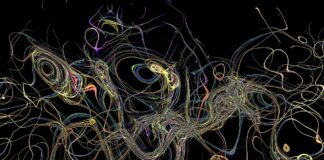Computer Vision is a field of artificial intelligence and computer science that enables machines to interpret and understand visual information from the world. It involves developing algorithms and systems that can extract meaningful insights and make decisions based on images or videos. The ultimate goal of Computer Vision is to replicate and enhance human vision capabilities using digital images and videos as inputs.
Computer Vision is pivotal in various applications across industries, including healthcare, automotive, robotics, surveillance, entertainment, and more. It plays a crucial role in enabling machines to perceive their environment, identify objects, recognize faces, navigate surroundings, and interact with the world in a manner akin to human perception.
Comprehensive Exploration of Computer Vision:
1. Definition and Scope
Computer Vision refers to the field of study focused on enabling computers to interpret and understand visual information from the world around us. It involves developing algorithms and systems that can process digital images and videos, extract meaningful data, and make decisions based on visual inputs. Computer Vision algorithms aim to replicate and enhance human vision capabilities, enabling machines to perceive, analyze, and interpret visual data in real-time.
2. Image Classification
Image classification is a fundamental task in Computer Vision that involves categorizing images into predefined classes or categories. This process requires training machine learning models on labeled datasets, where each image is associated with a specific label. Classification models learn to identify patterns and features in images that distinguish one class from another. For example, a model trained on a dataset of animal images can classify new images as cats, dogs, or birds based on their visual features.
3. Object Detection and Recognition
Object detection and recognition are essential capabilities in Computer Vision that involve identifying and locating objects within images or video frames. Object detection algorithms not only detect the presence of objects but also draw bounding boxes around them to indicate their locations. Object recognition goes further by assigning specific labels or categories to detected objects, such as identifying different types of vehicles in traffic surveillance footage or recognizing landmarks in outdoor scenes.
These foundational aspects of Computer Vision enable a wide range of applications across industries, from automated quality control in manufacturing to real-time facial recognition in security systems. Advances in deep learning, particularly convolutional neural networks (CNNs), have significantly improved the accuracy and efficiency of Computer Vision systems, making them capable of handling complex visual tasks with high precision.
By leveraging Computer Vision technologies, businesses can automate repetitive tasks, enhance decision-making processes, improve customer experiences, and drive innovation across various sectors. As Computer Vision continues to evolve, fueled by advancements in AI and machine learning, its potential to transform industries and society at large remains vast and promising.
4. Face Recognition
Face recognition is a specialized application of Computer Vision that focuses on identifying and verifying individuals based on their facial features. This technology involves detecting faces within images or video streams, extracting distinctive facial landmarks and features (such as the distance between the eyes or the shape of the nose), and comparing these features against a database of known faces. Face recognition systems are used for security and access control, identity verification in mobile devices, surveillance, and personalized user experiences in applications like social media and entertainment.
5. Semantic Segmentation
Semantic segmentation is a pixel-level classification task in Computer Vision that assigns a class label to each pixel in an image, effectively dividing the image into meaningful segments or regions. Unlike simple object detection, which identifies the presence and location of objects, semantic segmentation provides a detailed understanding of the image’s content by distinguishing between different object classes and background elements. This technique is essential for applications such as autonomous driving, where precise scene understanding is crucial for navigation and obstacle avoidance.
6. Object Tracking
Object tracking involves the continuous monitoring and prediction of the movement of objects across successive video frames. It addresses challenges such as object occlusion, changes in appearance due to lighting conditions or viewpoint changes, and the maintenance of object identity over time. Object tracking algorithms use techniques like motion estimation, appearance modeling, and Kalman filters to predict the future positions of objects based on their previous movements. Applications of object tracking range from video surveillance and human-computer interaction to sports analytics and augmented reality.
7. Pose Estimation
Pose estimation in Computer Vision refers to the process of determining the spatial position and orientation of objects or humans in images or videos. This technique involves detecting key points or joints on the object’s surface or human body, estimating their 2D or 3D positions, and reconstructing the object or human pose. Pose estimation is crucial for applications such as motion capture in animation and gaming, gesture recognition in human-computer interaction, and robotics for tasks requiring precise manipulation or interaction with objects.
8. 3D Computer Vision
3D Computer Vision focuses on understanding the three-dimensional structure of objects and environments from two-dimensional images or video sequences. It involves techniques such as stereo vision (using multiple cameras to triangulate depth information), structure from motion (reconstructing 3D scenes from multiple 2D views), and depth estimation (predicting depth from a single camera). Applications of 3D Computer Vision include augmented reality for placing virtual objects in the real world, robotics for navigation and object manipulation, and 3D reconstruction for cultural heritage preservation and architectural modeling.
9. Deep Learning in Computer Vision
Deep learning has revolutionized the field of Computer Vision by enabling more accurate, robust, and versatile models for image and video analysis. Convolutional Neural Networks (CNNs) have become the backbone of many Computer Vision tasks, including image classification, object detection, semantic segmentation, and face recognition. Transfer learning techniques allow CNNs to be trained on large-scale datasets and then fine-tuned for specific tasks, reducing the need for extensive labeled data. Generative models like Generative Adversarial Networks (GANs) and Variational Autoencoders (VAEs) have also advanced capabilities in image synthesis, super-resolution, and style transfer.
10. Applications and Future Trends
Computer Vision applications span across diverse industries and domains, driving innovation and transforming how businesses and organizations operate. In healthcare, Computer Vision supports medical image analysis, disease diagnosis, and surgical robotics by providing precise and automated diagnostic tools. In automotive and transportation, Computer Vision enables advanced driver-assistance systems (ADAS) and autonomous vehicles to perceive and understand their surroundings for safe navigation and decision-making.
In retail and e-commerce, Computer Vision powers applications such as automated checkout, inventory management, and personalized shopping experiences through visual search and recommendation systems. In security and surveillance, Computer Vision enhances video analytics for detecting anomalies, monitoring crowds, and identifying suspicious activities in real-time. Entertainment and gaming industries leverage Computer Vision for facial animation, gesture recognition, and immersive virtual reality experiences.
Future trends in Computer Vision include advancements in real-time processing capabilities, edge computing for low-latency applications, and the integration of Computer Vision with other AI technologies such as natural language processing and robotics. As datasets continue to grow in size and complexity, there is a focus on developing robust and interpretable models that can generalize across diverse environments and conditions.
In conclusion, Computer Vision continues to push the boundaries of what machines can perceive and understand from visual data, bringing us closer to achieving human-like visual intelligence. As technology evolves and applications expand, the impact of Computer Vision on society, economy, and daily life will only continue to grow, ushering in a new era of innovation and possibilities.














